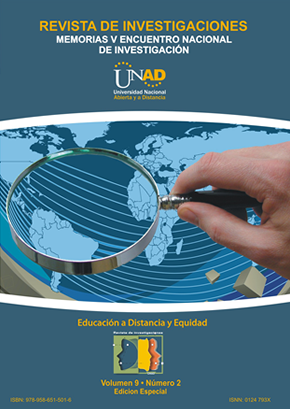Cuando la REVISTA DE INVESTIGACIONES UNAD recibe la postulación de un original por parte de su autor, ya sea a través de correo electrónico o postal, considera que puede publicarse en formatos físicos y/o electrónicos y facilitar su inclusión en bases de datos, hemerotecas y demás sistemas y procesos de indexación. REVISTA DE INVESTIGACIONES UNAD autoriza la reproducción y citación del material de la revista, siempre y cuando se indique de manera explícita el nombre de la revista, los autores, el título del artículo, volumen, número y páginas. Las ideas y conceptos expresados en los artículos son responsabilidad de los autores y en ningún caso reflejan las políticas institucionales de la UNAD
Los problemas de convivencia escolar: percepciones, factores y abordajes en el aula
This research was carried out in the Limbania Velasco Educational Institution, located in Santander de Quilichao, Cauca, Colombia, with students and group leaders of third grade, morning session, and eighth grade, afternoon session, during the 2008-2009 school year. The general goal was to analyze the factors, which limit coexistence in schools with the purpose of validating psychosocial practices and strategies that promote satisfactory interpersonal relations leading to a culture of peace in classrooms. A qualitative methodology was employed, based on active investigation on a sample of 159 students (79 from third grade and 80 from eighth grade). The research strategies include an institutional visit, observation of classroom, recess and playing environments, individual and group interviews, workshops, evaluation of classroom observers, and integration sessions or school retreats.
Since principal results one thinks that teachers and students perceive the conviviality in the institution as positive, though they present some problems of relations and of misbehavior in the interior of the school classrooms. In the third degrees there is identified the need to strengthen the spaces of dialog, listening and participation; the students of the eighth degrees, students relate coexistence with their daily experience; some of them highlight it positive and others denial; the teachers demonstrate the importance of approaching the attitude to the student and his emotions.
In conclusion, the problems of conviviality in schools are diverse, complex and dynamic. Approaching them from a psychosocial perspective implies examining human interaction in family and social contexts. The educational community develops both positive and negative strategies and actions that must be thinking in. Strategies were defined for intervention in problems regarding personal and group attitudes, interpersonal communication, adequate conflict management and collaborative work.




